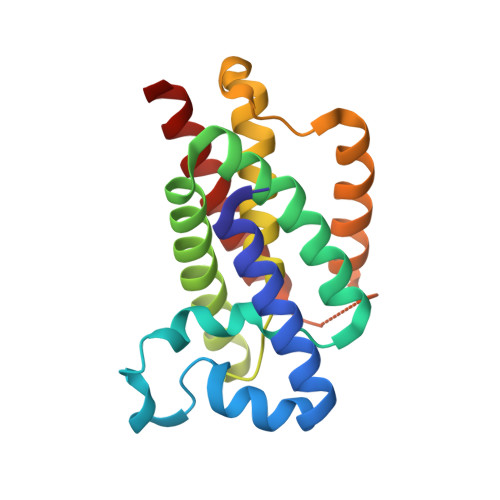Structure of rhomboid protease in a lipid environment.
Vinothkumar, K.R.(2011) J Mol Biol 407: 232-247
- PubMed: 21256137
- DOI: https://doi.org/10.1016/j.jmb.2011.01.029
- Primary Citation of Related Structures:
2XTU, 2XTV - PubMed Abstract:
Structures of the prokaryotic homologue of rhomboid proteases reveal a core of six transmembrane helices, with the active-site residues residing in a hydrophilic cavity. The native environment of rhomboid protease is a lipid bilayer, yet all the structures determined thus far are in a nonnative detergent environment. There remains a possibility of structural artefacts arising from the use of detergents. In an attempt to address the effect of detergents on the structure of rhomboid protease, crystals of GlpG, an Escherichia coli rhomboid protease in a lipid environment, were obtained using two alternative approaches. The structure of GlpG refined to 1. 7-Å resolution was obtained from crystals grown in the presence of lipid bicelles. This structure reveals well-ordered and partly ordered lipid molecules forming an annulus around the protein. Lipid molecules adapt to the surface features of protein and arrange such that they match the hydrophobic thickness of GlpG. Virtually identical two-dimensional crystals were also obtained after detergent removal by dialysis. A comparison of an equivalent structure determined in a completely delipidated detergent environment provides insights on how detergent substitutes for lipid. A detergent molecule is also observed close to the active site, helping to postulate a model for substrate binding and hydrolysis in rhomboids.
Organizational Affiliation:
MRC Laboratory of Molecular Biology, Cambridge, UK. [email protected]















